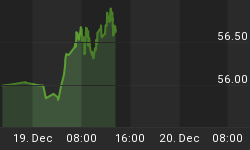May 27, 2009
The EUR USD recovered from early selling pressure but still closed lower for the session. Traders were selling the Euro overnight and seeking the safety of the U.S. Dollar after it was reported that North Korea tested an underground nuclear bomb and launched two missiles.
Early trading was down as investors waited to see if these events would turn into something prolonged. The uncertainty lasted until the U.S. released its Consumer Confidence report which showed a rise to its highest level in eight months. Investor appetite for risk grew after the release of this bullish number but failed to attract enough buying power to drive it through last week's highs.
Some traders cite the strong rally last week as a reason why the market could not muster enough buying power today. The feeling in the trading community is that the market was up too much, too fast. Some feel that bearish data from the Euro Zone is not enough to support prices at such lofty levels.
Technically, the main trend is up with a retracement zone at 1.4184 to 1.4621 as the next upside target.
The GBP USD recovered after an overnight setback triggered by uncertainty regarding an underground nuclear test and the launching of two missiles. This market turned around however following the release of a better than expected U.S. Consumer Confidence report. This report weighed on the safe-haven status of the Dollar.
Investors feeling more comfortable with the U.S. economic outlook bought British Pounds and drove its price through last week's high. The strong trend is likely to continue as long as U.S. economic data continues to signal a bottom in the economy. Traders now have the retracement zone at 1.6085 to 1.6694 in sight.
Renewed appetite for higher risk assets helped drive the USD CAD lower on Tuesday. This pair is now rapidly approaching a major retracement zone at 1.1059 to 1.0586. Watch for profit-taking or at the least a technical bounce once this level is penetrated.
The catalyst for the break was the news that U.S. Consumer Confidence soared to an eight month high. Rising U.S. Consumer Confidence is a sign that consumers may start to spend money which would help the economy dig out of the recession. Traders sold the USD CAD as investors became more comfortable with the prospect of a recovery in the U.S. economy. News that crude oil demand had picked up also helped fuel the weakness in the USD CAD. Bullish Canadian Dollar traders are hoping that the improved outlook for crude oil prices will help drive up the value of Canadian exports.
Look for the USD CAD to continue to trend lower. As the U.S. economy shows signs of improvement, pressure will mount on the safe-haven status of the U.S. Dollar.
The USD JPY finished the day on the upside after posting a minor daily reversal up. Traders seemed a little hesitant to drive this market through a major 50% support level at 94.263 and a major bottom at 92.529.
Despite assurances from the Bank of Japan last week that it was not considering an intervention, traders seem to be concerned that excessive upside volatility in the Yen may trigger some bearish response from the BoJ even if it is not an intervention.
The strong surge in the U.S. equity markets also had a negative influence on the USD JPY today. Early in the session the USD JPY was trading lower because of concerns about the military events in North Korea. Traders were seeking the safety of the Japanese Yen and pulling out of higher risk assets. Once the bullish U.S. Consumer Confidence report was released, traders actively bought the USD JPY to invest in U.S. equities.
Traders kept upside pressure on the USD CHF throughout the day despite the better than expected U.S. Consumer Confidence report. The recent rally in the Swiss Franc renewed concerns that the Swiss National Bank would intervene if valuations got too high.
Talk is also circulating that the Swiss National Bank may have to consider other forms of quantitative easing if the Swiss banking system does not to show signs of improvement or if the global financial crisis continues.
The charts indicate that this market is caught between a pair of important retracement prices at 1.0973 to 1.0660. The trend is down, but could begin to strengthen if 1.0973 is regained.















